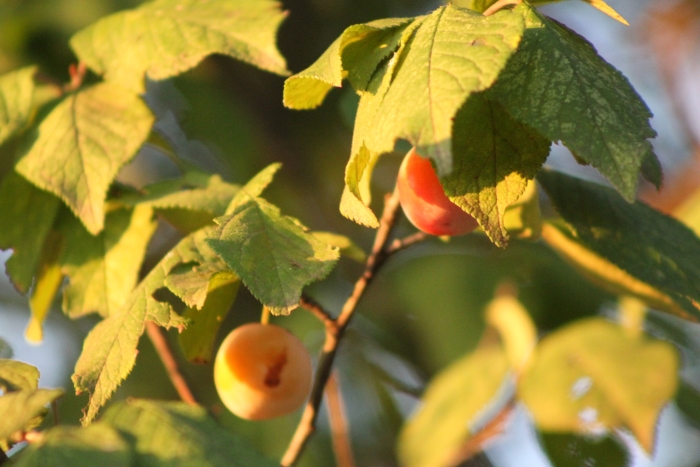Mexican Plum
(Prunus mexicana)
Mexican Plum (Prunus mexicana)
/
/

Clay
CC BY 4.0
Image By:
Clay
Recorded By:
Copyright:
CC BY 4.0
Copyright Notice:
Photo by: Clay | License Type: CC BY 4.0 | License URL: http://creativecommons.org/licenses/by/4.0/ | Rights Holder: Clay | Publisher: iNaturalist | Date Created: 2021-09-10T07:53:06-07:00 |



















































Estimated Native Range
Summary
Prunus mexicana, commonly known as Mexican Plum, is a deciduous tree native to a variety of habitats including open woodlands, forest edges, and grasslands in the South-Central United States and Mexico. It typically grows to a height of 15–38 feet (4.6–11.6 meters) with a single trunk that supports a rounded canopy. The leaves are dark green, simple, and ovate, while the bark is dark gray with distinctive horizontal lenticels. In early spring, the tree is adorned with clouds of fragrant white or pale pink flowers, each up to an inch wide, which are highly attractive to pollinators. By late fall, it produces dark red or purple fruit, which can be used to make preserves.
The Mexican Plum is valued for its ornamental qualities, including its showy spring blossoms and the wildlife it attracts. It is suitable for urban planting, border planting, and as a specimen tree in residential gardens. The tree is adaptable to full sun or part shade and requires medium amounts of water, thriving in soils with medium to fast drainage. While it is widely cultivated, including on the west coast of the United States, gardeners should be aware of potential issues such as plum curculio and bacterial leaf spot. Despite these concerns, the Mexican Plum is generally easy to maintain and is not known for aggressive roots or invasiveness.CC BY-SA 4.0
The Mexican Plum is valued for its ornamental qualities, including its showy spring blossoms and the wildlife it attracts. It is suitable for urban planting, border planting, and as a specimen tree in residential gardens. The tree is adaptable to full sun or part shade and requires medium amounts of water, thriving in soils with medium to fast drainage. While it is widely cultivated, including on the west coast of the United States, gardeners should be aware of potential issues such as plum curculio and bacterial leaf spot. Despite these concerns, the Mexican Plum is generally easy to maintain and is not known for aggressive roots or invasiveness.CC BY-SA 4.0
Plant Description
- Plant Type: Tree, Shrub
- Height: 15-25 feet
- Width: 15-25 feet
- Growth Rate: Moderate
- Flower Color: White
- Flowering Season: Spring
- Leaf Retention: Deciduous
Growth Requirements
- Sun: Full Sun, Part Shade
- Water: Medium
- Drainage: Medium, Fast
Common Uses
Bee Garden, Bird Garden, Butterfly Garden, Drought Tolerant, Edible*Disclaimer: Easyscape's listed plant edibility is for informational use. Always verify the safety and proper identification of any plant before consumption., Fire Resistant, Fragrant, Rabbit Resistant, Showy Flowers
Natural Habitat
Native to open woodlands, forest edges, and grasslands in the South-Central United States and Mexico
Other Names
Common Names:
Scientific Names: , Prunus mexicana, Prunus americana var. lanata, Prunus lanata, Prunus polyandra, Prunus fultonensis, Prunus reticulata, Prunus palmeri, Prunus mexicana var. reticulata, Prunus mexicana var. flutonensis
GBIF Accepted Name: Prunus mexicana S.Watson